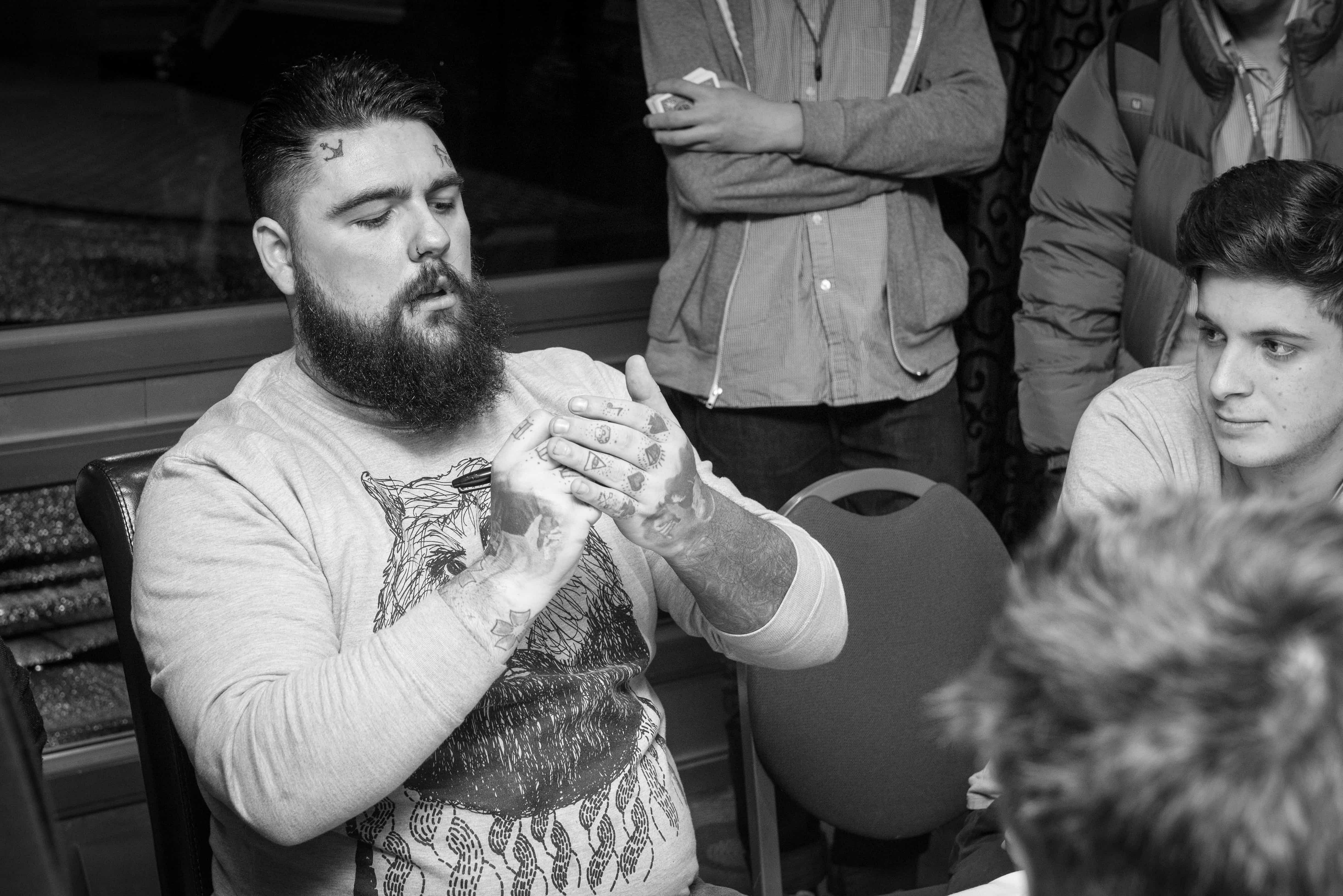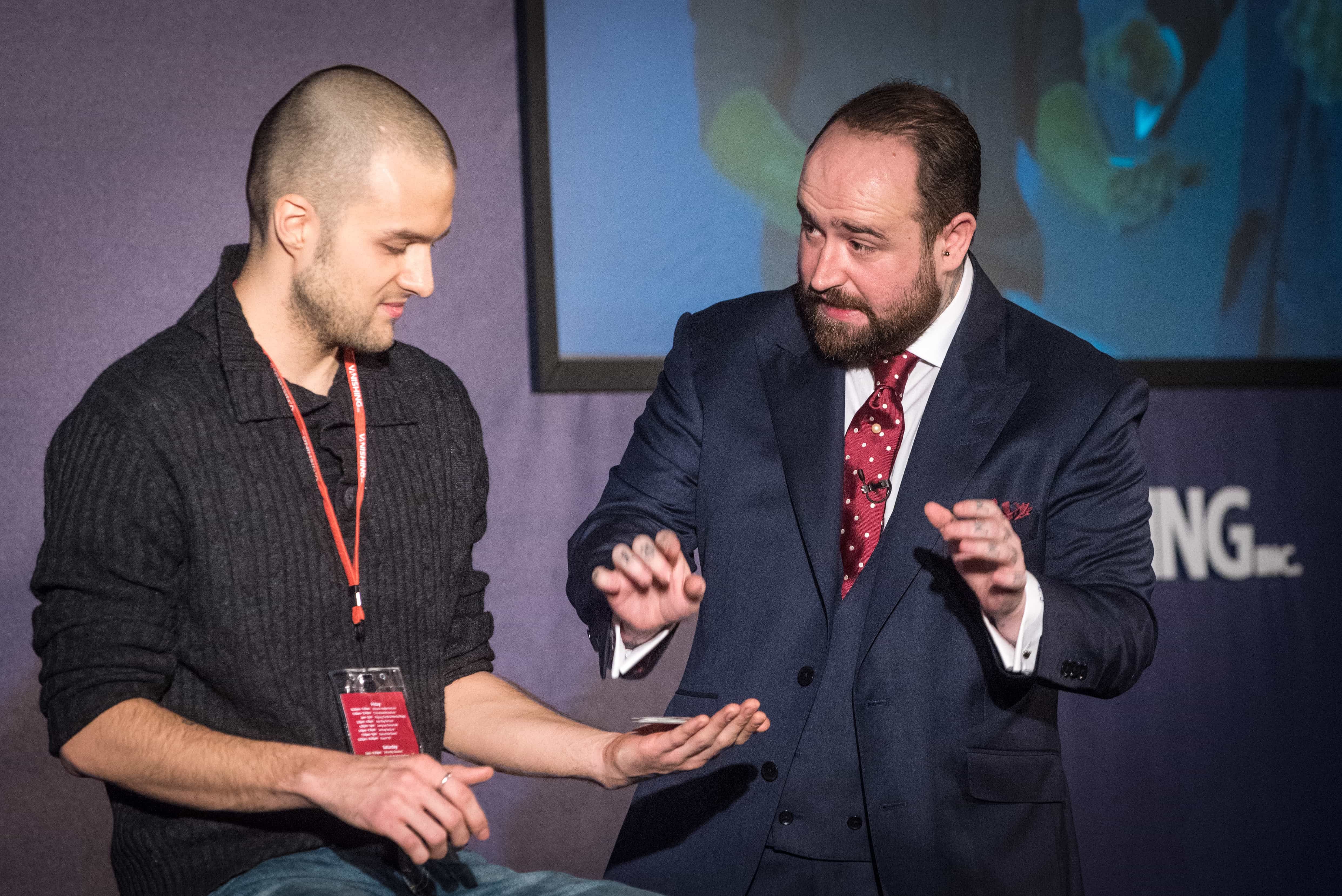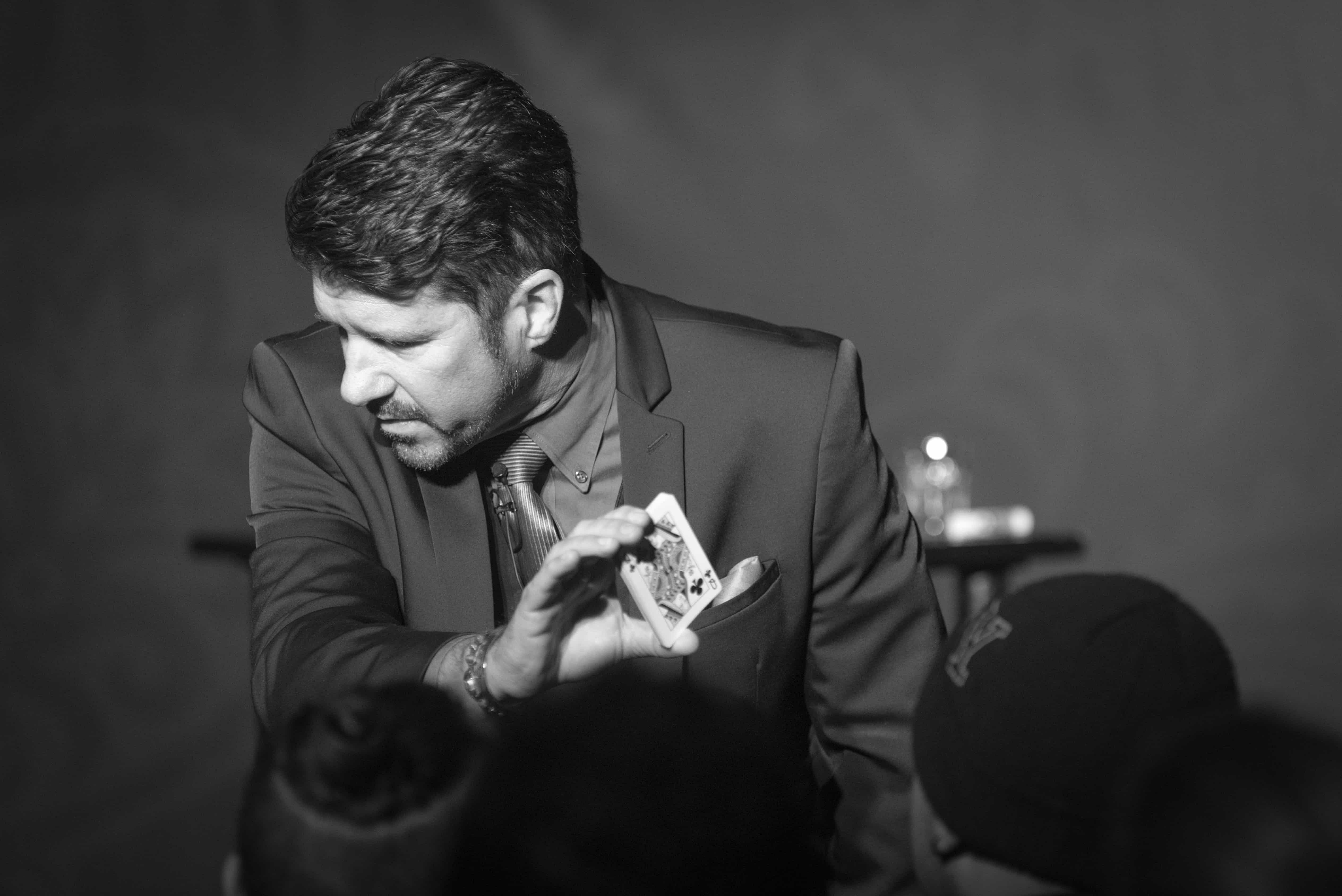How Does Cold Reading Work?
Are psychics real? Can psychics see the future or speak with the dead?
We regret to inform you that, according to science, the answer is no. Under test conditions, nobody has ever been able to successfully demonstrate psychic skills or other supernatural powers (not even the legendary Uri Geller).
So, if psychics or fortune tellers like John Edwards, Sylvia Browne or the Long Island Medium Theresa Caputo are fakes or frauds, how do they convince total strangers that they seemingly know personal details about their life?
It’s actually quite simple. These individuals often take advantage of a powerful mentalism technique known as cold reading that's also used in mentalism.

What Does Cold Reading Mean?
Cold reading is essentially combining high-probability guesses and broad statements with carefully crafted language and psychological tricks to create the appearance of intuitive perception or paranormal gifts. There is no singular technique for cold reading, but rather a set of techniques that leverage a deep understanding of human psychology and body language.
An effective cold reader is a good listener and attentive observer that carefully studies an audience to discreetly gather information. You’d be amazed at how much they can learn about you just from subtle facial expressions or changes in body language such as the way you sit or talk, or even just your clothes or hairstyle.
Exposing Fake Psychics
Cold reading is one of the most common mentalism techniques used by fraudulent psychics, clairvoyants, fortune tellers and other scam artists to convince people that they have supernatural powers or connections to a spirit realm where they can contact dead relatives.
However, cold reading is not all bad though. It’s actually a valuable skill in the arsenal of any aspiring mentalist and has been used regularly throughout history. by famous mentalists from The Amazing Kreskin to Luke Jermay.
Cold reading is a great way to learn information about your audience and enhance any mind reading trick. That is, of course, as long as you’re presenting it as a feat of “psychic entertainment” and not some sort of authentic otherworldly ability. The latter is heavily frowned upon in the mentalism community.
Renowned mentalists and magicians like Ian Rowland, Kari Coleman, The Amazing Randi, Penn & Teller and Derren Brown have worked diligently to expose frauds. Even the legendary Harry Houdini dedicated the later stages of his life to debunking phony psychics, mediums and spiritualists.
Check out the video below to watch Derren Brown show how convincing cold reading can be:
Learning How to Cold Read
The most crucial component of cold reading happens before you even start. Just like a good magic trick, effective cold reading is extremely dependent on proper audience selection. You must find spectators that are susceptible to suggestion. As you’ll learn later on, a cooperative spectator often will end up doing most of the work for you during a cold read.
Prior to the show, many advanced mentalists will also walk through the crowd or have confederates (or secret assistants) engage with the audience. In some cases, they may even use the audience registry to research certain individuals. All of this is done to gain as much information ahead of time as possible. Known as a “hot read”, these details can be carefully inserted into a cold read to create an even more impressive showing of mentalism skill.

Common Cold Reading Techniques
Shotgun Statements
Similar to how a shotgun fires loads of pellets, Shotgun Statements are broad statements that can apply to a large majority of people. They are usually claims that perfectly toe the line between being too vague and too specific.
For example, a psychic might say “I’m connecting with an elderly person, a person who was really special and recently passed away”. While this Shotgun Statement is more specific than “I see a boy or girl”, it’s also vague enough to strike an emotional chord with multiple people in a large room.
Barnum Statements
Like Shotgun Statements, Barnum Statements (also known as the Forer Effect or personal validation fallacy) are vague claims that capitalize on our inherent human nature to read between the lines and draw our own personal conclusions. This is very similar to the principles employed in horoscopes.
Mentalists and psychics will often try to broaden their reach and chances of success with Barnum Statements by using non-committal phrases like “At times”. For example, “At times you may have serious doubts that you made the right decision about a big change in your life.”
They will also create win-win situations through loaded or contradicting statements about human behavior where opposites agree. For example, “While there are times you are extroverted and love being the life of the party, you also understand the value of being alone and embracing your inner introvert”.
Ignoring the Misses
Using vague statements to gain valuable information from your audience is known as “fishing.” Just like the activity it’s named after, mental fishing isn’t always successful on the first try. In fact, even experienced world-famous mentalists like Max Maven will often fail more than they succeed during a cold read.
What sets a master cold reader apart from an amateur though is the ability to minimize the “misses” and emphasize the “hits.” Once they finally get a “hit”, they will quickly shift gears to build on this success using a variety of other cold reading techniques or even some minor hot reading (see above).
Like a snowball effect, this first hit will result in more responses from the spectator that give the cold reader additional information that can be carefully refined into even more successes. By spending a majority of the time focusing on “successes”, a confident cold reader can easily get an audience to forget about the many previous failures and give the impression they know far more information then they really do.
Turning Failures into Successes
Experienced mentalists will also find ways to convert misses into hits. This is done either by coercing the spectator into helping you change the meaning or simply playing the blame game.
For example, they start with a Shotgun Statement like “Does the name John mean anything to?” After receiving no response, they might change the question to “Actually, I think it might be another J name?” or even “a name with a J sound”. Here, they might get lucky and have someone chime in and say “Is it Jacob?” or “Gerald”, which the mentalist will of course exuberantly play off as if it were a direct hit from the start.
In a worst case scenario, the mentalist may have to just bail out completely and try a different statement. In those situations, they will often shift the blame to the spectator, telling them that they aren’t being open enough to connect with the spirit world. An ideal cold reading spectator will often accept that as a valid explanation.
See how these cold reading techniques work in the video below.
Recapping and Reusing Key Details
Cold reading also requires you to be an excellent listener. Any piece of information provided by a spectator can be extremely beneficial. It can either help you progress to the next step or even be saved in your brain for an extra “hit” later on. You’d be shocked at how easy it is to take something that the spectator verbally said and feed it back to them at a later time as if you thought of it yourself.
Misremembering
Psychics (and magicians!) regularly take advantage of the fact that the human brain is actually quite easy to fool. Our memory is very easily influenced by our natural confirmation bias that makes us believe what we want to be true as opposed to what actually happened.
For example, someone who has had a psychic reading will typically only remember the moment where the medium made a connection with a deceased loved one. Very rarely will they be able to accurately recall the long line of questioning it took to get there or the variety of information they unwillingly exposed along the way. Additionally, as more time passes, they’ll begin to fill in the gaps with extra details that never actually occurred.
Cold Hard Facts About Cold Reading
While many mentalists will spend decades honing their cold reading skills, James Underdown of the Center for Inquiry and Independent Investigations Group argues that it’s actually not that difficult to do. By examining cold reading from a mathematical and probability viewpoint, he was able to potentially uncover why fake psychics on TV like John Edwards can seem so successful at predicting the future or reading minds.
James found that a typical studio audience will have upwards of 200 people. Using a conservative estimate, it’s fair to say that each of these individuals knows 150 more people. So, if a medium or mentalist says “Who is Laura?” they’re looking for a “hit” in a mental database of 30,000 people! We’d say that’s pretty good odds.

Tips for Effective Cold Reading
Are you a mentalist or psychic entertainer that wants to start cold reading or improve your psychological influence skills? Check out these helpful tips for learning how to cold read.
- Cold reading will only work if you’re committed to your performance and truly believe in your own abilities. A bold and confident cold reader can make even minor readings look like a major success.
- It’s always best to underpromise and overdeliver. By being modest and avoiding extravagant claims about your supernatural abilities, you can avoid increased expectations that might ultimately increase awareness of your failures.
- Establish with your audience from the beginning that the success of your reading depends heavily on their ability to be a willing and open participant that believes in your abilities.
- Set the mood and add a touch of drama with unique and interesting props such as crystal balls and tarot cards for psychic reading demonstrations.
- Continually expand your internal list of stock phrases and statements that can be used to add filler to your act and also buy you time during a lengthy string of failures.
- Keep your eyes and ears open. A good cold reader is someone who lets the audience carry the act while they diligently observe and react accordingly. You’ll find that letting the subject do most of the talking will inevitably give you the most valuable information.
- You can coerce your audience into guiding the reading by turning every statement into a question that requires more than a “yes” or “no” answer. Instead of saying “Does a white house mean anything to you?”, say “I see a hazy image of a white house, what does this mean?”
- Avoid stereotyping by gathering factual knowledge about different groups of people through relevant research reports, polls and surveys.
- And, most importantly, remember the golden rule of cold reading. Always tell your subject what they want to hear. Try to turn every negative into a resounding positive.
Books about Cold Reading
Want to learn more about cold reading? Here are some great mentalism books that discuss cold reading:
Be sure to also check out our complete list of the essential mentalism books that all mentalists should read. You might also like our buyer’s guide for the most popular mentalism effects or our free mentalism tricks.
